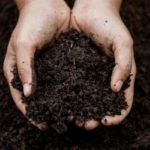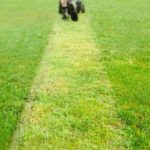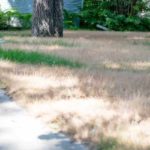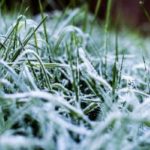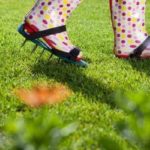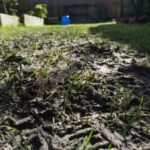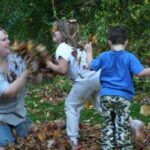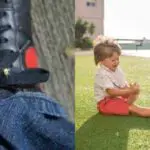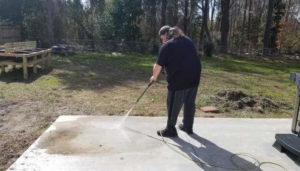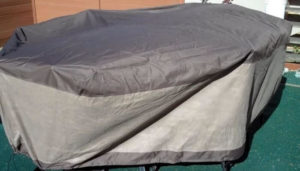Homeowners often battle to maintain a green, healthy lawn for their home and there is a lot of information that is wrong. An example of this is the question:
Does watering grass in the sun burn it?
Watering your grass in the heat of the day under a bright sun will not burn it. The reflection of light from water droplets has nothing to do with dry, discolored grass which might be due to thatch or too much salt, or even drought. Let’s go over 10 things that really will damage your lawn.
These ten things are very important to know so that you don’t make any mistakes. And if you want to know even more about each one, I’ll also add some links. So, keep reading!
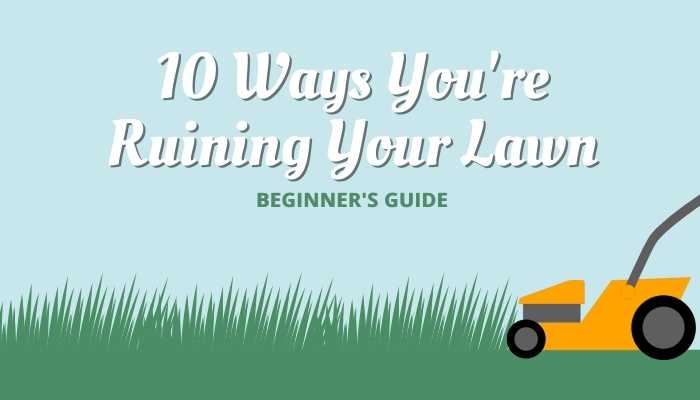
Watering Your Yard Too Often or at the Wrong Time
You should water your grass in the morning before the temperatures get too hot. Most gardeners I know say it’s best before 10 am, wherever you happen to be. Otherwise, wait til after 4-5 pm but not so late that the sun is down when the temperatures have begun to fall.
Watering in the morning helps ensure that more water gets to the roots instead of simply evaporating. Watering in the evening does the same. However, you have to be careful about watering too late, because if the water isn’t absorbed, it can encourage fungal growth.
Also, don’t give your grass over two inches of water per week. You can measure this by placing a cup somewhere in the range of your watering method – sprinklers usually. Once the cup has 2 inches of water in it, that section of your lawn should be good.
During the summer, barring rainfall, you should at most water your lawn 3 times per week to reach this goal. During colder seasons, watering should only need to happen at most twice per week, because these seasons tend to be naturally wet or damp. So only water when there has been a long stretch of time without precipitation.
Cutting the Grass Too Short or with a Dull Blade
Cutting grass too short is called scalping. Sometimes this is done on purpose and sometimes it’s an oopsy-daisy! The oopsy-daisy can be very detrimental to your lawn. When your lawn is scalped, the grass is cut so low that it affects the crowns and stems of the plant – the parts that grow.
In other words, if you scalp your lawn in the incorrect manner or at the incorrect time, you can manage to kill a good portion of the grass on your lawn. Then, you’ll have the long battle to repair it while also keeping weeds to a minimum.
Over-Fertilizing Your Lawn
The best time to fertilize your lawn is right after you aerate it. It’s also the best time to use any weedkillers you may want to use. I don’t use weedkillers, because I want a natural lawn, but this is the best time frame to try and be rid of any pesky thorn plants that come up in the middle of the yard, where people and pets walk. I pull those up.
Besides, if you fertilize your lawn correctly, there should be no need to worry about a lot of weeds. If your wanted grass is thick and cared for, it will choke out any unwanted weeds like grass burrs. The only thing to be careful of? Over-fertilizing.
Over-fertilizing can actually stunt the growth of plants or yellow and dry up the leaves. This is because fertilizing too much can cause a salt build-up. Use the directions on the fertilizer and also perhaps get your soil tested before applying anything. You may have to cut the fertilizer dosage.
Leaving Anything on the Grass
Obviously, if you leave things on your grass, it will cause the grass to yellow, grow mold, and be killed off. This is actually something that we often do when we want to kill off grass in a certain area or if we want to keep weeds to a minimum in unused soil over winter. So, just don’t do it. Try and clean everything, including fallen leaves, from your grass.
Using Insecticide to Eliminate Insects and Spiders
The problem with using insecticide for killing insects and spiders on your grass is that the chemicals sometimes have bad effects on plants. I’ve accidentally killed plants and destroyed patches of grass before because I didn’t do a spot check before spraying insecticide.
In case you missed this lovely notation – insecticides can cause strain on the insect population and actually lead to over-production of eggs. So, you may accidentally be causing a larger infestation than you originally had. You need to follow the label guidelines if you are going to use insecticides. Keep in mind that the instructions for a lot of insecticides are the opposite of what your lawn needs (ie watering).
Dedicating One Area of the Yard to the Dog
Dog poop does not fertilize the grass. It actually can kill the grass. And if you have dedicated one area of your yard to the dog’s droppings, that area of grass will begin dying. Dog poop also can carry parasites and spread bacteria. So, it’s best to get that up as soon as you can.
Now, I have had a dedicated area for my dog to go to before, and I feel like, if you teach your dog to go to one area in particular, it can be must easier for clean-up. But that’s just me. If it’s in the back of the lawn, you and your friends aren’t around it. So long as it’s far enough away from the outdoor living space, should be no odor, either, so honestly, I would do this. It would mean one portion of your yard is messed up, not all of it.
Ignoring Weeds or Bare Spots in Your Lawn
If you ignore bare spots, weeds can take over. And if you ignore the weeds, they will spread and overtake your lawn. So, as soon as you see them, handle them. Pluck the weed, taking as much root as possible. Spread grass seed in any bald spots and water using a sprinkler to keep the soil moist to encourage new growth.
Mowing the Grass While It Is Wet
You really shouldn’t mow the grass while it’s wet. Why? Well, for one thing, the grass will stick to the inside and underside of the mower blade casing and can even clog it so bad that the blade cannot turn. It’s very annoying to have to stop over and over again for this. But, that is not the only reason why you shouldn’t mow wet grass.
Wet grass is weighed down, so it won’t stand tall and let you just cut it. Instead, the blades bend, causing uneven cuts and clingy clippings. The cuts wind up being messy, adding to thatch and a dry, messy look.
Walking on the Grass in Winter
There is a very important reason why we don’t walk on the grass during the winter. Simply put, your grass goes mostly dormant for the winter. That means the blades aren’t as hearty and the color fades. The most important portion of the plant, the part that is responsible for more growth is the crown – and it’s actually between the ground and the blade.
During the winter, the crown can freeze and when it does, it is quite fragile. Enter your feet. If you walk on grass in winter, you can harm those crowns and then the grass won’t grow anymore and might die because of it.
Not Following a Yearly Maintenance Plan
Being sure to fertilize the lawn when you should and aerate it and even seed it appropriately is all things that fall into the annual maintenance of a nice yard. And that’s not just for fancy yards with a specific kind of grass. This is a good idea for natural lawns as well.
It’s important to know when to aerate. It’s also important to know when the issue is something else. If you pay attention to your lawn and what’s going on in it and around it, you can be better prepared to make sure it stays healthy and thrives. This needs to be planned out over the year. You’ll need to prepare in Fall for what’s going to happen in Spring, for instance.
Know more about your soil and lawn. That’s the best advice I can give. The more you know about landscaping, your backyard, and lawncare, the quicker you can overcome myths. Also, the quicker you’ll notice problems and handle them before they ruin everything. If you need more information, be sure to look around the website!

